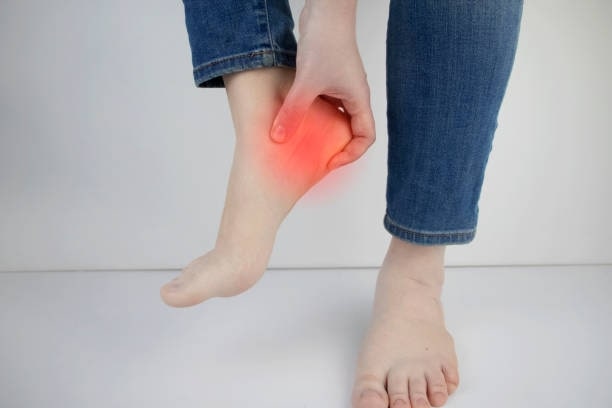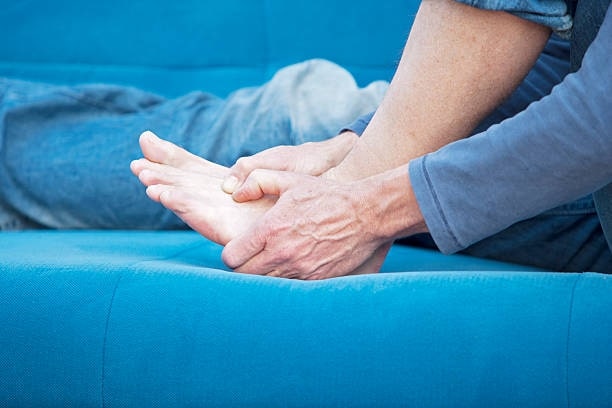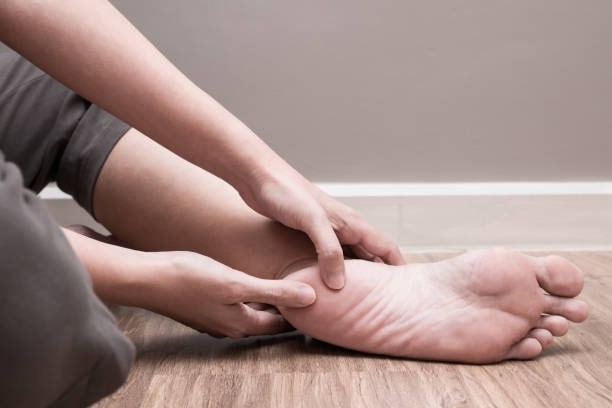There are many causes of heel pain, like facilities and Achilles tendinitis. It is a very common illness of sore heel and ankle diseases.
But due to rest and stretching treatment, you will get comfortable with time.
FACT: As per the research, if you don't get treatment and ignore your healing pain, then it turns into severe chronic problems.
Also, you will need a longer treatment to recover it. You can even use Seepskin women's slippers. So due to this severe problem, you can also get surgery!
Table of Contents
What Should You Know About Heel Pain?
It's a very widespread ankle disease. You will feel pain behind your feet and ankle. There are so many reasons which cause healing problems, like plantar fasciitis and tendonitis.
Other reasons for heel problems are Bone spurs and Bursitis.
FACT: Mostly, children from 8 to 14 years old can suffer from severe diseases. You can also suffer from this disease due to a fracture of the foot.
It's very important to take treatment because due to heel pain, you cannot walk properly, and you will not be unable to do daily activities.
Where does heel pain develop?
You will feel pain anywhere in your heel. You will also feel soreness or stretching in your heel.
But commonly, you will feel pain beneath healing, and you may want to fight depression. You will also feel pain in the heel bone in this disease.
What causes pain behind the heel?
There are so many problems that cause pain in your heels like:
Achilles tendonitis:
These are the tissues which are the muscles of the calf with the heel bones. We can also say it is a long and strong tendon of your body.
Players of games suffer more with this Achilles tendinitis. So due to any injury, the tendon gets damaged. So you will feel pain, swelling, and paralysis in your heel.
Bursitis:
When fluid-filled sacs swell, then you will suffer from Bursitis. These sacs allow the movement of fluid then. You may feel tenderness and pain also in the back of the heel.
When you walk more or put pressure on your heels for a long time, then you will suffer from Bursitis.
Haglund's deformity:
When you have an infection or irritation in the heels, then it will cause enlargement of the bony bump. You will get swelling in the back of the heel.
It will also occur due to high heels, as suggested by Professor Gordana Prelevic. You will get severe pain and a bump on the back of your heel.
Sever's deformity:
FACT: Active children of 8 to 14 years can suffer from this disease of heel pain. Most players can suffer from this disease.
Well! The children and players who run a lot and do jumping in games suffer more from this disease. It will also affect your growth. So we can say that a lot of physical activities will cause this disease.

Expert Suggestions To Overcome Heel Pain:
You can overcome many reasons for heel pain with non-surgical treatments. With these therapies, you can heal your injury and pain.
You will get ease with these therapies recommended by Dr. Rod Hughes. It also can improve the flexibility of your foot. So it will minimize your heel strain and pain!
These therapies are the following:
1. Injections:
Steroid injections are used to reduce heel pain and swelling. It is given to the patient with tendon problems. So doctors used this injection to heal the problem of Bursitis.
2. Orthotic devices:
Mostly high heels shoes and custom-made shoes become the reason for heel pain. So that's why some patients use bandages to get relief at night time and also in the daytime.
FACT: Doctors like Dr. Stephen Gallacher also suggest walking boots to get relief. So you have to buy the most comfortable and soft pair of shoes for you so that you can walk easily and do your exercise.
3. Pain relievers:
(NSAIDs) and ice packs will be more helpful for you to ease your heel pain.
4. Physical therapy:
Massage therapies and other ultrasound therapies will give more ease to your tissues. So by this method, you will get ease and also reduce your pain.
5. Stretching exercises:
Exercises suggested by doctors are more helpful in reducing pain. Through these exercises, your tight tendons and muscles become relaxed.

6. Taping:
There is a very low chance of surgery for heel pain, so you can heal it by using a medical tap to support the foot.
When should you contact your doctor?
You can take a rest to lower your signs. But if it can't work and does not get better in two days to a week. Then you have to get an appointment with the doctor.
In The University of Edinburgh, the researchers consult doctors about the following things to check include:
- If your pain starts suddenly and becomes severe.
- When you feel swelling and redness in your heel, and you cannot walk because of it.
- When you feel pain beneath your feet or heel
RISK FACTORS:
Plantar fasciitis mostly occurs in people whose living style and duty affect the heel. Actions like running or dancing can reflect symptoms.
Logical other aspects that enhance the chance of plantar fasciitis contain chubbiness, increased standing, and restricted ankle flexibility!
Runners can immediately suffer from plantar fasciitis. While the possibility of this is very rare but the factors that increase the risk are:
- A lot of training while you wear improper running shoes.
- Also, when you stand longer on a hard surface.
- Improper surfaces to walk on, like mountains, etc.
- Flat feet and high arches also cause the problem.
Plantar fasciitis commonly happens in people who suffer from medical problems.
It is also very common in people who suffer from diabetes. It is also linked with other diseases such as arthritis!
Diagnosis of Heel Pain at Initial Stages:
If you feel normal indications of plantar fasciitis, then there is no need for X-rays, ultrasound, or other physical tests.
As per the research of Dr. Felicity Kaplan, It is happening with lots of people, so it's general. But in some cases, depending upon the health and pain and other individual factors.
Final Verdict:
To know about plantar fasciitis, your doctor will take a medical history.
He will also analyze your feet to discover painful areas in your heel. He will hold your foot in a static position with one hand.
You can use another hand to press the different parts of your feet. It is necessary to tell your doctor if you feel pain or to stretch if the doctor is not found during the exam.
So then he will analyze it properly and suggest some techniques to heal the pain!


